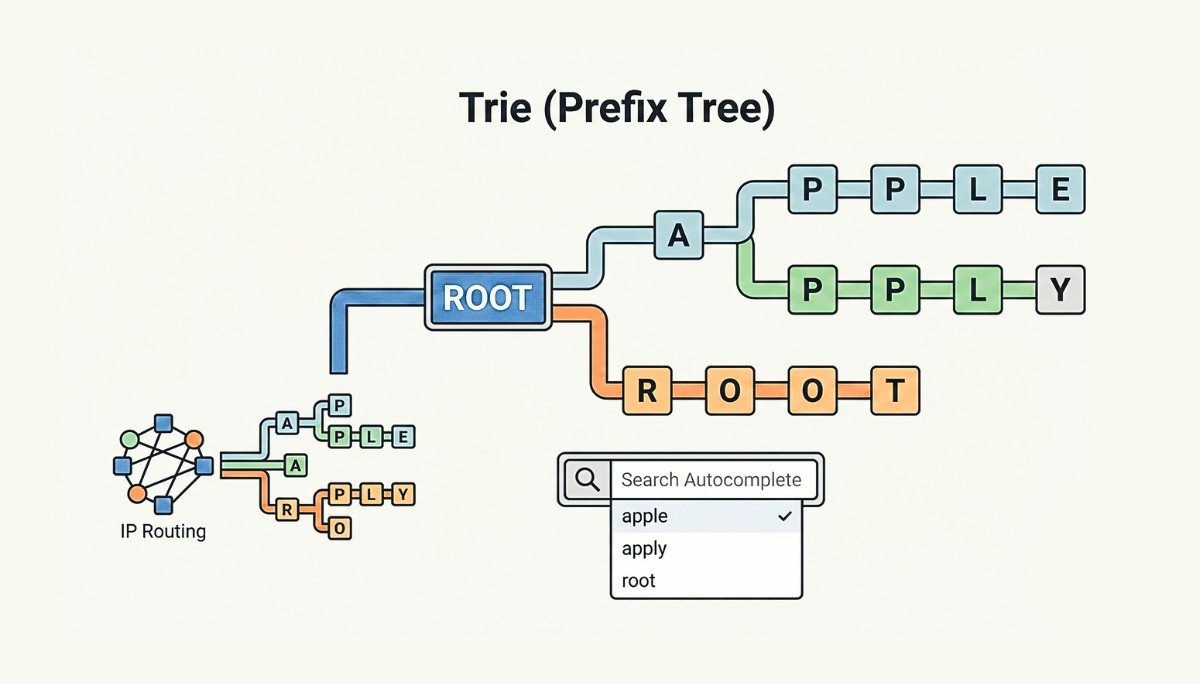How to Create an AI: A Guide to Building Artificial Intelligence
By
Liz Fujiwara
•
Jul 31, 2025
Want to create artificial intelligence? You’re in the right place. Whether you’re a curious beginner or an experienced developer looking to deepen your expertise, this article will walk you through everything you need to know, from core AI principles and real-world applications to the practical steps for building and deploying advanced AI systems.
This article will cover the fundamentals of machine learning, neural networks, and natural language processing, along with the tools, frameworks, and best practices that power modern AI solutions. By the end, you’ll not only understand how AI works but also have a roadmap for creating systems that can learn, adapt, and deliver real impact.
Key Takeaways
Understand the key concepts and types of AI, like Artificial Narrow Intelligence (ANI), Artificial General Intelligence (AGI), and Artificial Superintelligence (ASI), to fully grasp the potential of AI technologies.
Prioritize ethical considerations and thorough planning during development, ensuring objectives are clearly defined and high-quality data is collected for successful outcomes.
Leverage specialized tools, platforms, and continuous monitoring practices to optimize algorithm effectiveness, performance, and adaptability in real-world applications.
Understanding Artificial Intelligence

Artificial intelligence (AI) is a field focused on developing systems that mimic human intelligence, performing tasks that typically require human thought and reasoning. Its core goal is to create systems that can think, reason, and act like humans. These systems aim to solve problems, make decisions, and learn from experience. This broad discipline includes several approaches, with machine learning (ML) as a key method enabling computers to learn from data.
Recent technological advancements, such as greater processing power and the rise of cloud computing, have significantly accelerated AI development. Understanding the distinctions between different types of AI is essential to grasping how today’s intelligent systems work and their real-world applications.
Key Concepts in AI
Deep learning models, inspired by the human brain, have revolutionized AI by enabling machines to perform tasks that require human-like capabilities. These models leverage neural networks; neural networks are interconnected nodes that simulate brain functionality to identify patterns and relationships in data. This process allows AI systems to interpret complex patterns and make informed decisions.
AI algorithms are often categorized by their training methods and applications, which influence their effectiveness across different scenarios. Common examples include decision trees, reinforcement learning, and various machine learning techniques. Understanding these key concepts is essential for selecting the right tools and methods for specific AI tasks.
Types of AI Systems
Artificial Intelligence can be categorized into three primary types:
Artificial Narrow Intelligence (ANI), also known as Weak AI, is designed to perform specific tasks, such as powering virtual assistants like Siri or Alexa and running recommendation systems. These systems are highly specialized and limited to the tasks they were programmed for.
Artificial General Intelligence (AGI) represents a theoretical AI system capable of performing any intellectual task that a human can, aiming to match human intelligence across various domains.
Artificial Superintelligence (ASI) is the most advanced and purely theoretical concept, referring to AI that would surpass human intelligence in all areas.
Setting Up for AI Development

AI development requires several critical steps, beginning with ethical considerations and structured planning. Issues such as bias, transparency, and accountability are paramount to ensure responsible AI practices. Breaking down complex problems into smaller tasks and following a clear step-by-step framework helps make the development process more efficient and effective.
The AI development setup typically involves data collection, algorithm selection, and iterative training. However, common challenges like skill shortages, security concerns, and the lack of high-quality data can pose significant hurdles. Addressing these obstacles early on is essential for ensuring the success of AI projects.
Defining Objectives
A clear goal serves as the foundation for any AI development process. Defining objectives involves specifying the AI model’s purpose and its broader impact on business operations. This step shapes the entire project’s direction, from data collection to algorithm selection.
Incorporating a human feedback loop from end-users can further refine AI functionality, ensuring the system aligns with intended goals and adapts to new tasks and challenges over time.
Data Collection and Preparation
Data is the lifeblood of AI development. Collecting high-quality data from diverse sources enhances the adaptability and performance of AI models. These sources include:
Public datasets
APIs
Internal data generation
High-quality data is essential for effective learning and model accuracy, making data collection a critical step in the AI development process.
Data cleaning and preprocessing ensure that the collected data is consistent and usable for training. This preparation involves removing errors, filling missing values, and normalizing data to accurately represent the problem at hand.
For example, computer vision systems rely on vast datasets of labeled images for training, which improves their accuracy in tasks such as image recognition.
Selecting Tools and Platforms
Selecting the right AI tools and platforms is crucial for successful AI development. Python remains the primary programming language due to its simplicity and extensive library support. JavaScript, particularly with TensorFlow.js, is also widely used, offering flexibility for web applications and supporting multiple programming environments.
There is a wide range of commercial and open-source tools available, with TensorFlow and PyTorch being among the most popular for building AI systems. Platforms featuring visual interfaces can be especially helpful for beginners, making AI development more accessible.
Google Cloud, AWS, and Azure offer powerful GPUs and pre-built AI services that streamline the development process. When choosing tools, it’s important to consider factors like pricing, ease of use, and the specific requirements of your project.
Developing AI Algorithms

Creating effective AI algorithms is the cornerstone of successful AI development. Machine learning enables computers to improve their performance on tasks such as classification, prediction, and anomaly detection by learning from data. AI has evolved from traditional models requiring human intervention to deep learning models capable of independently learning new tasks.
Developing AI algorithms involves selecting the appropriate methods and techniques to solve specific problems. This process is essential for building intelligent systems that can adapt and respond effectively to a wide range of challenges.
Choosing Learning Algorithms
Choosing the right learning algorithm is essential for the success of AI projects. Supervised learning uses labeled data to train models, making it suitable for tasks where the desired output is known. In contrast, unsupervised learning identifies patterns in unlabeled data, making it ideal for exploratory analysis.
Reinforcement learning, commonly applied in areas like gaming and robotics, enables models to learn through trial and error. Transfer learning leverages pre-trained networks to improve results with less data, making it a powerful technique for tackling new tasks. Selecting the right algorithm based on the specific use case is necessary for effective AI development.
Algorithm Optimization Techniques
Algorithm optimization focuses on enhancing the accuracy and efficiency of AI models. This often involves tuning hyperparameters, settings that control how the model learns from data. Common hyperparameter tuning methods include grid search, random search, and Bayesian optimization.
Regularization techniques help prevent overfitting, ensuring that AI models generalize well to new data. Cross-validation methods, such as k-fold and leave-one-out cross-validation, split data into training and testing sets to assess a model’s predictive performance, often using tools like scikit-learn.
Monitoring performance metrics during training helps identify potential issues and further improve model accuracy.
Training AI Models
Training is a critical phase in AI development, where the system learns to address real-world problems. The goal of training an AI model is to identify patterns in data and make accurate predictions. High-quality data that accurately represents the problem is essential for effective training.
This process involves configuring algorithms and evaluating performance to ensure the model learns effectively from the data. Addressing potential challenges during training is vital for developing robust AI systems.
Configuring the Training Process
An effective training environment requires sufficient cloud computing resources or dedicated hardware. The first step in training an AI model is preparing high-quality data relevant to the model’s purpose. Depending on the problem type and data availability, various algorithms, such as neural networks, decision trees, and support vector machines, are employed.
Key training parameters include hyperparameters like learning rate and batch size, which greatly influence how the model learns from data. Experimenting with different hyperparameter configurations helps optimize the training process and enhance model performance.
Evaluating Model Performance
Cross-validation is a crucial step in AI model training that tests the model on new, unseen data to evaluate its ability to generalize. Its purpose is to assess predictive performance and ensure the model performs well on real-world data.
Common performance metrics for classification tasks include accuracy, precision, and recall, while regression tasks rely on metrics such as mean squared error and R-squared values. Detecting issues like overfitting, where a model performs well on training data but poorly on new data, is key to building robust AI systems.
Monitoring these performance metrics and making necessary adjustments after training helps maintain model accuracy and reliability over time.
Implementing Neural Networks

Neural networks, fundamental to deep learning, consist of layers of interconnected nodes that process data. These networks include input, hidden, and output layers, with each node acting as a unit that performs computations on the data.
Different types of neural architectures, such as convolutional neural networks (CNNs) for image processing and recurrent neural networks (RNNs) for sequential data, are employed to address complex tasks.
Neural Network Architectures
Neural networks typically consist of several layers, including input, hidden, and output layers. The input layer receives the initial data, which is then processed by the hidden layers, ultimately producing the final output through the output layer. Each layer plays an important role in transforming input into meaningful predictions.
Common activation functions, such as ReLU, sigmoid, and tanh, determine whether neurons activate and introduce non-linearity into the network, enhancing its ability to learn complex patterns. Weights in neural networks define the strength of connections between neurons, influencing how signals are transmitted and processed throughout the network.
Advanced Deep Learning Techniques
Advanced deep learning techniques like convolutional neural networks (CNNs) are particularly effective for tasks involving image recognition. CNNs excel at identifying and classifying elements within images, making them ideal for computer vision applications.
Recurrent neural networks (RNNs) are designed to process and predict sequential data, such as time series or natural language. Deep learning models utilize multiple layers to learn hierarchical features, enabling them to tackle complex tasks with high accuracy.
Specialized AI Applications

Specialized fields within AI include:
Natural Language Processing (NLP), which enables AI models to understand and interpret human language
Computer Vision, allowing AI to analyze and make sense of visual data
Speech Recognition, helping AI accurately identify and process spoken language
These specialized techniques are designed to solve specific problems and tasks, making AI highly effective across a wide range of applications that require technical expertise.
AI models are capable of handling diverse tasks, from image recognition to language understanding, demonstrating the versatility and potential of AI technologies. These applications are pivotal in advancing AI development and creating intelligent systems that efficiently perform specialized functions.
Natural Language Processing (NLP)
Natural language processing enables AI to understand and generate human language, bridging the gap between human communication and machine interpretation. NLP models often use word embeddings to represent words and capture their context, allowing AI systems to interpret and generate language more effectively.
Key challenges and advancements in NLP include:
Understanding context and detecting nuances like sarcasm in human language
The emergence of transformer models, which have significantly enhanced language understanding and generation
Applications such as sentiment analysis and natural language generation that improve user interactions
These technologies are especially valuable in customer-facing applications, enhancing communication and user experience.
Computer Vision
Computer Vision is a branch of AI focused on interpreting visual information from the world around us. Convolutional neural networks are widely used in computer vision tasks due to their effectiveness in image processing. These networks can identify and classify elements within images, making them ideal for applications such as object detection and image recognition.
The capability of computer vision systems to process and analyze vast amounts of visual data has enabled numerous applications. From autonomous vehicles to medical imaging, AI holds great promise in tackling real-world problems.
Speech Recognition
Speech recognition technology converts spoken language into text, enabling AI systems to understand and respond to human speech. Traditionally, Hidden Markov Models (HMMs) combined with neural networks were widely used for speech recognition tasks.
A recent trend in this field is the adoption of end-to-end deep learning models, which simplify the process and significantly improve accuracy. However, challenges remain, such as handling accents, filtering background noise, and recognizing natural speech, making speech recognition a complex area in AI development.
Deploying AI Systems
Deploying AI models makes them accessible to users and integrates them into applications, transforming theoretical models into practical tools. This process includes incorporating AI software into real-world environments, defining user interfaces, and ensuring the system remains user-friendly, secure, and aligned with its objectives.
After deployment, ongoing optimization and continuous monitoring are essential to maintain system performance and address emerging issues. These efforts ensure the AI solution continues to operate effectively and meets user needs.
Deployment Strategies
Cloud services enhance scalability and resource management during AI deployment, making it easier to handle large-scale applications. Edge computing, which processes data closer to its source, reduces latency and improves real-time data processing for deployed AI systems. Understanding different deployment strategies is critical to ensuring efficiency and scalability in AI applications.
Combining cloud platforms with edge computing can create scalable and efficient deployment strategies, ensuring the system remains responsive and effective across various environments.
Integrating APIs for AI Access
RESTful APIs, widely used in web and mobile applications, simplify the integration of AI functionalities into existing software frameworks. APIs enable developers to seamlessly incorporate AI services, improving application capabilities.
Using RESTful APIs provides a standardized approach to integrating AI services across different platforms, ensuring compatibility and ease of use. This approach makes it simpler for developers to add AI features to their applications, accelerating the adoption of AI technologies.
Maintaining and Improving AI Systems
Maintaining and improving AI systems requires addressing vulnerabilities during deployment to enhance security and reliability. Implementing proper methodologies for monitoring and responding to potential threats is essential to safeguard system integrity and performance.
Continuous monitoring helps detect performance issues early, enabling timely interventions. Regularly evaluating new technologies and techniques can further improve AI systems, ensuring they remain effective and aligned with the latest advancements.
Monitoring and Maintenance Best Practices
Regular monitoring of model performance is critical to ensure the AI system functions as intended and meets established objectives. Maintaining accurate outputs depends heavily on data quality, as high-quality data improves both performance and reliability.
Ongoing maintenance, including testing models with new data, helps ensure they remain accurate and effective over time. Additionally, conducting regular security assessments is vital to protect AI systems from vulnerabilities and maintain their integrity.
Continuous Improvement and Retraining
Regular updates to AI models are important to keep predictions up-to-date and accurate. AI models can be improved by trying new AI methods and incorporating more data sources, enhancing their performance and adaptability.
To boost AI model performance and ensure continued effectiveness in dynamic environments, it is necessary to:
Update them with relevant data.
Establish a regular retraining schedule for maintaining AI model effectiveness.
Ensure they continue to meet user needs.
How Fonzi Can Help in AI Hiring
Fonzi is a curated talent marketplace that connects companies with top-tier, pre-vetted artificial intelligence engineers. By streamlining the hiring process, Fonzi enables businesses to find the right talent to effectively leverage AI tools, ensuring the expertise needed to drive successful AI projects.
Fonzi also offers a streamlined hiring event called Match Day, which brings companies together with pre-vetted AI engineers to simplify recruitment. This is a reliable platform for businesses to hire skilled AI developers, enhancing their AI capabilities and project outcomes.
Overview of Fonzi's Services
Fonzi offers a curated marketplace that exclusively matches pre-vetted AI engineers with companies seeking specialized skills. This approach improves recruitment efficiency by connecting businesses only with serious, qualified candidates.
Fonzi’s services are designed to help companies find highly skilled AI engineers through a reliable and efficient process. This ensures organizations can quickly secure the expertise needed for successful AI projects.
Benefits of Using Fonzi
Using Fonzi enables companies to hire quickly by providing immediate access to qualified candidates ready for interviews. This approach significantly reduces recruitment challenges and time-to-hire, with most hiring decisions finalized in under three weeks, improving cost efficiency and saving valuable time.
Fonzi supports organizations of all sizes, from startups to large enterprises, addressing diverse AI hiring needs effectively. The platform also offers personalized community support throughout the hiring process, ensuring a smooth experience for both companies and candidates.
Summary
Creating artificial intelligence requires a solid understanding of core concepts, clear goal-setting, and the effective use of tools and techniques. From defining specific tasks and collecting high-quality data to selecting appropriate algorithms, every step plays a vital role in building impactful AI models. Successful training and deployment depend on careful planning and continuous optimization to ensure strong real-world performance.
By leveraging platforms like Fonzi, companies can connect with top-tier AI talent, streamlining recruitment and securing the expertise necessary for success. As AI technology evolves, staying informed about emerging trends and best practices will be critical to maintaining and advancing AI systems. With the right tools and techniques, you’ll have everything you need to create powerful AI solutions.




